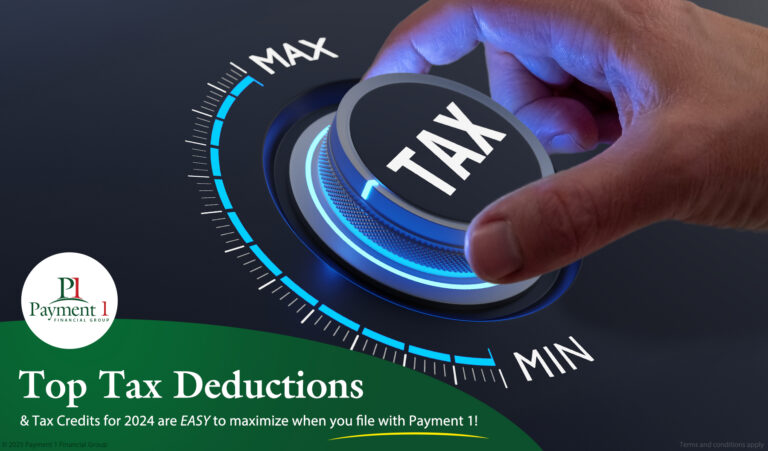What is a Personal Loan: A Complete Guide from Application To Paying It Off

Credit cards are not the only way to consolidate debt, finance purchases, or get quick access to emergency funds. Personal loans are a fantastic option for people looking to get big-ticket items or meet any potential shortfall within a home. But what is a personal loan, exactly? How does it work? How do you make sure you can pay it off on time?
Here’s everything you need to know about personal loans – from application to paying it off. If you’re allergic to borrowing money because of its complicated nature, this should make it a little easier.
What is a Personal Loan?
Personal loans are money you borrow from an entity, usually a bank or a different financial institution, carrying a fixed repayment schedule and consistent monthly payments. These are unsecured loans too, which means they don’t require borrowers to set any existing asset to work as collateral for the money.
Unlike some loan types, you don’t need to justify the reason for applying for a personal loan. In addition, borrowers are not restricted to where they can use their loan money, compared to home or car loans.
Much like any loan, these are provided by banks under several criteria, which include but are not limited to credit score, income level, repayment capacity, history of employment, and more. Since it’s unsecured, lenders cannot auction your properties under collateral. Hence you can expect a slightly higher interest rate.
But perhaps the best part of a personal loan is its fixed interest rate. It also uses a fixed repayment timeline, which makes it easier for clients to figure out their entire loan. So whether you’re looking to use it for higher education or considerable medical contingencies, getting a personal loan can save you during a rainy day.
How Does a Personal Loan Work?
Suppose you plan on getting a personal loan. In that case, the first step is to start the application process with the financial institution of your choice. It can be a bank or any qualified lending company. Still, completing an application form and providing all required documents starts.
Personal loans value in amount, usually around $1000 up to $100,000 for some finance agencies. The interest rates for a personal loan can range between 2.99% and about 36%. Borrowers will also get somewhere between one to seven years of repayment time.
Once you submit your application form, including your choice of amount and repayment schedule, all you can do is wait. Depending on the financial organization, you will likely get an answer within a few hours or several days. If you get loan approval, you will get an almost immediate disbursement and can use the funds for whatever purpose.
You would also receive your first date of payment, which is likely a few weeks after your loan. On-time payments will reflect positively on your credit history and vice versa. In addition, lenders will continue reporting your progress, so it’s vital to pay your bills on time.
What You Need To Know When Applying for a Personal Loan
Understanding the black and white is essential to learning how personal loans work. These specifics can help you understand the moving parts of your loan and enable you to pay on time. Some of the crucial details of a personal loan that every borrower must realize include the following:
Monthly payments
These are your fixed monthly payments, calculated using the value of the principal and interest. Depending on how long your repayment timeline is, you can get a much lower monthly due but a higher interest rate over time.
Annual percentage rate (APR)
Personal loans usually charge a fixed APR, which changes according to creditworthiness, personal income, and more. This also determines the interest rate of the loan throughout its lifespan.
Repayment timeline
This is the period the lender gives you to pay off your loan. On average, a personal loan usually has between one to seven years for its timeline.
Origination fees
These are usually fees on top of the original principal, generally around 6% of the total principal.
Your loan rates vary depending on your lender. Many set a fixed APR for borrowers, which means you’ll know how much you can expect to pay over your repayment period. Your APR comes from different factors, including your existing credit score.
Those with a good credit score can qualify for the lowest rates, with the best rates available only to those with a credit score above 700. Annual income and payment history can also be a factor. The APR will also include fees incurred by the lender.
How To Apply For A Personal Loan
Here’s a step-by-step guide on how to get a personal loan.
1. Figure out how much money you need
To avoid stretching your finances too thin while repaying the debt, ensure you run the numbers before taking out a loan. Decide how much money you need and consider the monthly payments and the other fees that come with the loan.
2. Check your credit score
Know where you stand; lenders will surely do. If your score is lower than the lenders require, consider waiting until you have improved your credit standing. However, getting a loan with a low credit score is still possible. You just have to expect the interest rates to be higher.
3. Decide which type of loan to get
Once you know your credit score and how much money you need, it’s time to determine the type of loan that best suits your needs. We will get into more details later, but the different types of loans include secured and unsecured loans, personal lines of credit, and debt consolidation loans, to name a few.
4. Shop for the best rates
Take your time looking for the best interest rates. Don’t settle for the first offer you get. If there is a bank or credit union you’ve been a member of for a long time, consider going to them first. Some lenders allow you to get prequalified via a soft credit check. This will not impact your credit score, so take advantage of it if available.
5. Choose a lender and submit the required information
After researching, it’s time to pick a lender and submit your application. Lenders vary in the requirements they ask from borrowers. Still, in most cases, you must provide your complete name, contact information, employment details, income, and reason for the loan. To speed up the process, gather and make copies of all the documents you may need — payslips, driver’s license information, proof of residence, etc.
6. Accept the loan and start paying
Once approved, the last step would be to accept the terms and conditions and finalize the loan. You will receive the funds in one to two business days. It is best to set up automatic payments to ensure you don’t miss any.
How To Get Your Personal Loan Approved
Is there a way to boost your chances of getting your personal loan approved? Unfortunately, there definitely is no universal formula for this. However, all lenders have one thing in common: they want to be paid back on time. So, here are a few ways to boost your chances.
Improve your debt-to-income ratio (DTI)
A lower ratio (monthly debt payments divided by your monthly income) can show that you have your debts under control and can take more. You can improve your DTI by taking a side hustle to increase your income and do what you can to decrease your debt.
Don’t borrow too much money
Asking for too much money may decrease your chances of being approved, which is why it is crucial to run the numbers first and only borrow the amount you need.
Consider getting a co-signer
If you are unsure if your credit score can make the cut, ask someone to co-sign your application. A co-signer must have a better credit score and income and can afford the risk since they will repay the loan if you default.
Types Of Personal Loans
As mentioned before, different types of personal loans depend on your needs. Here are some of them.
Secured personal loan
This personal loan requires you to put up collateral before taking out the loan. For example, you can use your vehicle as collateral. This is also known as a title loan.
Unsecured personal loan
This, on the other hand, does not require collateral. However, you can expect the interest rates to be higher since the lender assumes more risk.
A personal line of credit
This works best for people after a safety net from which they can get funds as needed. It works as a usual credit line, and you acquire interest from the amount you draw.
Debt consolidation loan
This allows you to roll all your debts into one single loan. This works best if the new APR is lower than the interest rates of your current debts.
3 Things To Consider When Choosing A Personal Loan Provider
You will be dealing with your loan provider for the duration of your paying months or years, so do due diligence in choosing your provider. Here are a few things to consider.
Application process and processing time
The shorter the processing time, the better. Choose a loan provider that has a straightforward process and can get back to you within 72 hours after you’ve submitted all the requirements. Also, some lenders can process your application online — a convenience most of us need.
Interest rates and hidden fees
Thoroughly review the lenders that you consider and choose one with the most attractive rates. Banks and other non-banking financial institutions charge high processing fees, so watch out for those, too.
Brand trustworthiness
Just as the lender checks your credit and background, you must also ensure that the institution you work with has credibility. Check for online reviews and loan policies before making a decision.
Alternatives to Personal Loans
If personal loans may not be the most suitable and convenient for you, you may consider the following alternatives.
- Home equity loan if you have equity in your home and are still able to avoid foreclosure after taking a loan
- 401(k) loan if your job is stable and you can repay the loan against your retirement fund within five years
- Credit card if you would instead borrow as needed and you can zero your debt monthly
- Borrowing from a family member, if you are comfortable with the idea and there’s someone who could help you
What You Can Use A Personal Loan For
What is a personal loan for? Personal loans can be used for several purposes; they are versatile. For example, you can take out a loan for a home improvement project, pay for medical bills, respond to an emergency, pay for funeral expenses, cover moving costs, take a vacation, or pay for your wedding.
How Personal Loans Affect Your Credit Score
You can expect a slight dip in your credit score upon application since the lender will take a hard look at your credit. However, repaying the loan can help your credit score bounce back and can actually aid in building it up as you make timely payments. However, in the short term, don’t expect to be able to get another loan or open a new credit card easily.
Pros And Cons Of Personal Loans
Personal loans can be advantageous because they can:
- Help build your credit score. Lenders report your payment history to the major credit bureaus. So, if you are making timely payments, your credit score will reflect it.
- Let you consolidate debts. You can take advantage of a personal loan by rolling all your debts into one account, making it easier to track payments and potentially lower interest rates.
- Let you access cash fast. Most lenders can provide the funds within a day or two after you complete all the requirements.
On the other hand, be wary of the risks involved when taking out a personal loan.
- On the flip side, it can damage your credit score. If you miss out on your payments, the credit bureaus will know it, too.
- Come with fees and penalties. It’s essential to look into lenders’ fees, such as origination, processing, and prepayment fees. When piled up, this will increase the cost of borrowing over time.
Quick Tips To Repay Your Personal Loan
Now that you know what a personal loan is and how it works, you need to know the best tips on managing your loan payments. Learning the right things you can do to pay off your loans quickly and consistently can prevent you from defaulting. It’s not only a matter of paying early too, but rather managing your finances to make payments more manageable.
Set your priorities
The first order of business when paying off your personal loans is to understand your priorities. Your monthly expenses, including food, rent, and loans, precede everything. Therefore, it’s best to buy luxuries only if you have disposable income, setting aside money to ensure your monthly expenses are paid.
Do not skip payments
It’s no secret that paying regularly and consistently is a simple but effective strategy. However, skipping payments is not something you want, as it costs you more money down the line and can lower your credit score.
Create a safety net
If you have extra money, it’s best to set aside enough for savings. Rather than putting it towards an additional loan payment, secure a safety net for yourself. This prevents any surprise expense from cutting on your money that has been set aside for regular expenses.
Be mindful of prepayment fees
It’s a good idea to consider potential prepayment fees, too. If the prepayment fees, a set amount that a lender charges you, are higher than your interest rates, you might want to wait it out and pay on time.
Is a Personal Loan Right For You?
Now that you have the answer to the question, “what is a personal loan?”, do you think it’s right for you? A personal loan might be a good idea if you need to borrow money to complete a necessary purchase. The fixed monthly rate, decent APR, and fixed repayment timeline allow for a predictable payment structure.
Want the best loan rates? First, build your credit score and keep other loans to a minimum. It’s also best to look for the most advantageous personal loan rates and repayment timelines.
If you’re looking for more information about personal loans, contact us now and find out exactly what you qualify for and what will be the best option for you.




